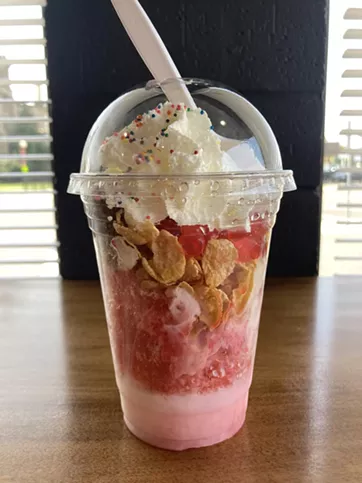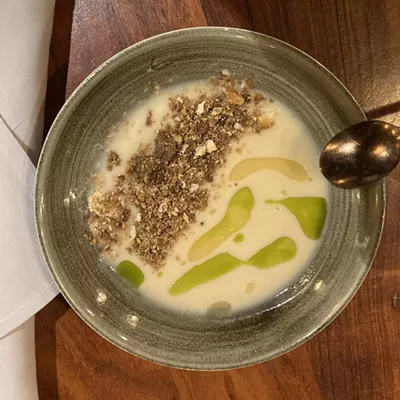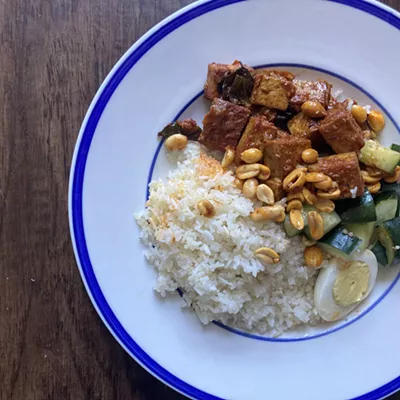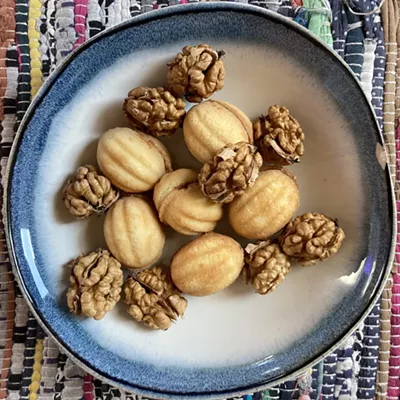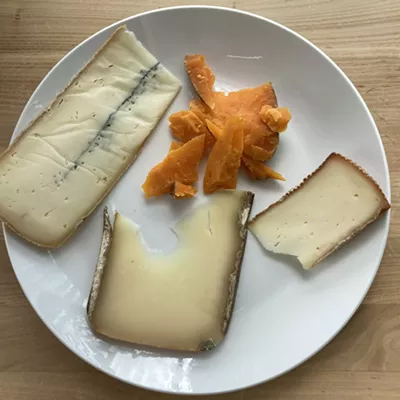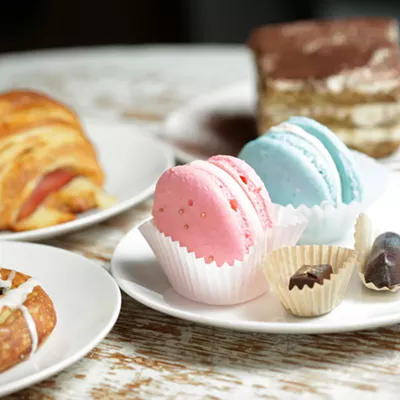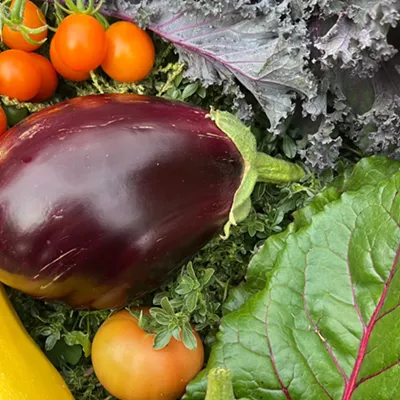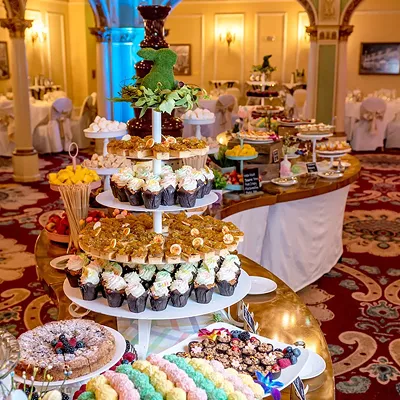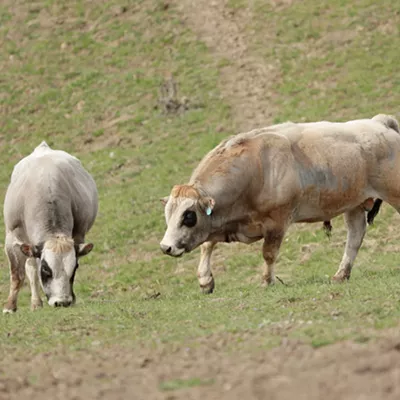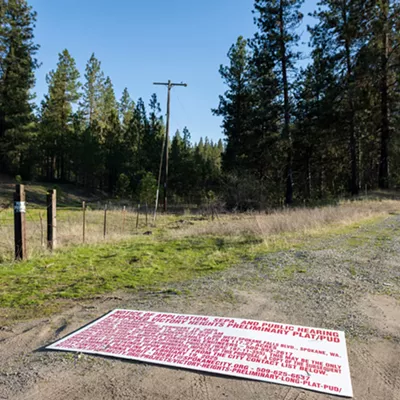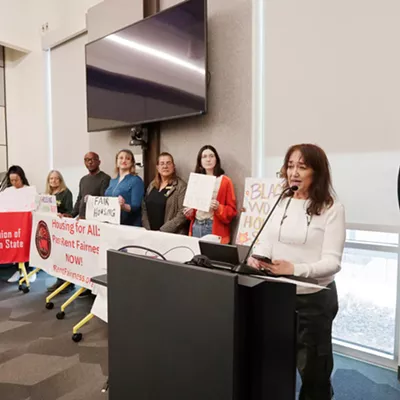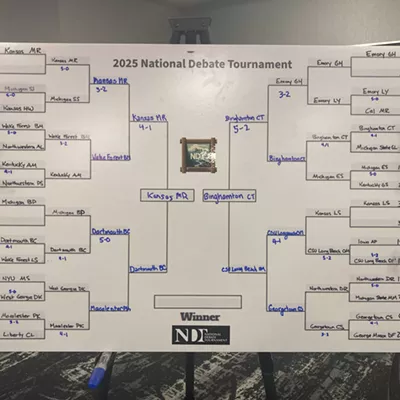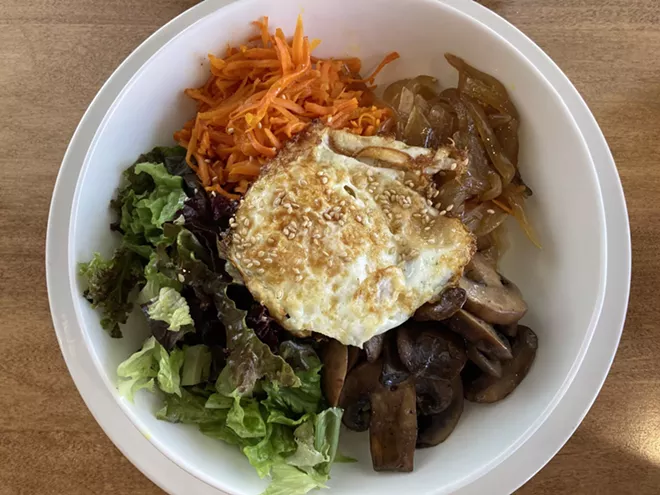
Count of dishes/places: 47
For me, summer is leftover season. I hate heating up the kitchen more than I have to, so I typically spend sweltering July evenings throwing together bits and pieces from my fridge.
If I do decide to fire up the stove, I try to make as much food as possible so the fridge raiding can continue for the next few days.
However, I have yet to master leftovers the way the Koreans have. Not only have they figured out how to make leftovers completely delicious, but they created an entire style of dish based on the concept. In short, they're my heroes.
Another hero of mine is Claire Lee, creator of a new Korean pop-up called Gangnam Eats. Originally from Gyeongju, South Korea, Lee is bringing playful, homemade Korean food to her new home.
Lee originally started filling small custom orders for kimchi or kimbap in whatever time she had leftover from being a mom to her two elementary school-age kids. Her scrumptious social media caught the attention of chef and restaurateur Kadra Evans, owner of Little Noodle and Itty Bitty Buddha Bar in the Garland District. Evans asked Lee if she would want to do a Korean food pop-up on Monday nights when Little Noodle is normally closed.
Inspired in equal parts by family tradition and new ideas, Lee adds her fresh takes to a city that already loves tried and true establishments like I Love Tofu, Fusion Korean, House of Seoul and Kim's Korean Restaurant. Lee's kimbap, bibimbap, spicy pork belly and bingsu show that she can master traditional flavors without being limited to traditional recipes.
I got to eat Lee's food for lunch at Feast World Kitchen last week, where she has also done two pop-ups so far. I've been waiting to try her recipes ever since I stopped by Gangnam Eats at Little Noodle last June — I came too late, and she was completely sold out.
Lee took a hiatus from cooking this July to take a trip back home to Korea. But come the first Monday of August, she'll be serving up japchae noodles and Yum Yum chicken on Garland Ave like she never left.
If you're planning on placing an order, take it from someone who knows: You're gonna want to get there early.
BIBIMBAP FROM JEONJU

Yes, it's delicious bibimbap, a Korean rice bowl typically topped with veg, a fried egg, and sometimes bulgogi beef.
No, it's not that the beef is missing (I ordered the veggie bibimbap for the sake of a lighter lunch).
The issue is the smaller, steel condiment holder, filled with a fantastic homemade bibimbap sauce — a wonderful mix of a spicy Korean paste called gochujang, plus sesame oil, garlic, Korean soy sauce and sugar.
The issue is that the sauce is way off to the side. Any Korean would be so confused.
"When you go to Korea and order bibimbap, none of the places will offer you the bibimbap sauce separately," Lee says. "It's always in the bowl."
Lee is from one of the southern most areas of South Korea, which is famous for especially spicy food. Her spice tolerance can run laps around most of us Spokanites. But instead of rubbing it in, she graciously serves her bibimbap sauce on the side so that each guest can choose their own level of heat.
The sauce isn't too spicy, and it's so packed with flavor that it's worth adding as much as you can. I managed to add about half of it, and I added most of the cucumber kimchi, too.
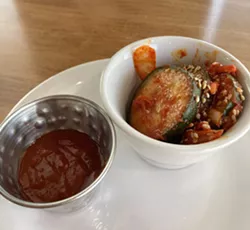
Because if I've learned one thing from this lunch, it's that an epic sauce is the secret to making leftovers shine.
At it's most basic, bibimbap is rice topped with whatever veg and protein you might have in the fridge. But by mixing it all up with a sweet, sour, spicy sauce, it becomes a brand new, exciting experience.
The dish's name reflects the simple process: "bibim" means "mixing" and "bap" refers to cooked rice. The result is a name that's just as fun to say as the food is to eat.
Because the concept is so basic, it's hard to pinpoint who exactly came up with the idea for bibimbap first. Apparently Jeonju, which is recognized by UNESCO as a Creative City of Gastronomy, claims to be its home and holds an annual bibimbap festival.
But bibimbap might be way more homespun than that.
"I don't think people really care how it originated," Lee says. "This is what people make, like the housewives who are so done with all the chores at home, the kids, and then the husband that calls and says, 'Oh, honey, I'm gonna be late.' So you put the kids to sleep, you just grab whatever you have —in Korea, you usually have couple banchan [Korean side dishes] available, and you more than likely have rice, and of course you have gochujang, and of course you have a sesame oil. So you just put them all together, whatever it is, then you just stir it and you eat it. It's the best that way."
I may not always have banchan, kimchi or gochujang in my American fridge at home. But next time I'm looking to build a bowl of leftovers, I'm gonna take some inspiration from Lee and her childhood — grab a grain, throw in a veg, and make a killer sauce.
Maybe I'll even add some extra spice so I can up my heat tolerance. I'd love to impress Lee by licking the side bowl clean next time.
BINGSU FROM SEOUL
It's really hard for me to sub anything for ice cream.
Most days I won't even look at sorbet.
And yet, if there were more bingsu options in Spokane, I might reorganize my dessert schedule and sub a scoop or two with this playful frozen treat.
Bingsu, which is sometimes spelled bingsoo, is a pile of finely shaved ice topped with sweetened condensed milk and different flavored toppings. It's cold, sweet and fun to eat, because the flaked ice is crunchy at first but immediately melts on your tongue.
Most bingsu are fruit flavored, but you can also find more contemporary styles that are drizzled with chocolate or sprinkled with Oreo crumbs.
And now, thanks to Lee, Spokane can try an even newer bingsu creation — strawberry bingsu topped with Frosted Flakes.
It's an import from Lee's days as a university student in Seoul. While most bingsu is served in a big bowl for sharing, a smaller cup of bingsu is cheaper, portable and personal — perfect for a busy college student.
"One of the places that I really liked had the cup bingsu, and then they put those Frosted Flakes in the bingsu," Lee says. "I had never seen that anywhere else, and I really liked it. So after that, whenever I go to a different or fancier place, I always kind of wished they had it."
Not only does Lee get to relive happy memories, but Spokane gets to join in on this whimsical treat. In addition to the childhood favorite cereal, Lee's cup bingsu also features bursting pink boba bubbles, chocolate syrup, whipped cream and sprinkles. It's like Tony the Tiger throwing a glitter party for a 12-year-old girl.
Judging by my complete delight, maybe my inner child is about 12.
Lee has one more reason she's the perfect person to bring bingsu to Spokane.
The invention of bingsu is intertwined with the invention of refrigeration in Korea. The ancient process of refrigeration in Korea is called seokbinggo, which refers to a cave-like icehouse made out of rocks. The most famous seokbinggo is in Gyeongju, the ancient capital of Korea and also Lee's hometown.
"I even took my husband there," Lee says. "He was blown away."
Lee keeps adding her own new ideas and innovations to Korean food. She's got a million ideas, she says, but she's happier than ever getting to cook exactly what she loves for her community.
"The people who bought the kimbap when I originally posted [on Facebook] are still coming to Little Noodle and supporting me," Lee says. "The very first customer ever who purchased my kimbap is now cooking with me every pop up. Can you believe that?"♦
Have an idea for what I should eat next? Wanna make me a traditional dish or contemporary creation from your hometown? Send 80 Plates tips and ideas to elizab@inlander.com.

